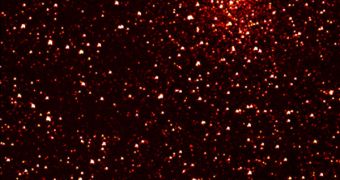A study published in the May 20 issue of the esteemed Astrophysical Journal Letters describes what could very well be a new class of star clusters. Experts say that the object known as NGC 6791 cannot be readily classified in any of the existing stellar cluster types.
Up until now, astronomers used to divide any new such structure between two groups, either globular clusters or open clusters. But the new object has traits belonging to both the two, which makes classification impossible without adding a third option.
One of the things that make globular clusters unique is the fact that the stars they contain are extremely old. Some of them are as much as 10 billion years old, and these stellar objects are very tightly bound to each other. They mostly contain hydrogen and helium.
On the other hand, open star clusters contain many metals, and are more loosely bound gravitationally. The stars they contain are also significantly younger than those in globular clusters, Space reports.
In a new study conducted on NGC 6791, experts at the Johns Hopkins University (JHU) found it impossible to introduce the cosmic structure into any of the two existing classifications.
In a statement, JHU expert and lead study author Imants Platais said that “NGC 6791 is a real oddball among about 2,000 known open and globular star clusters in the Milky Way and as such provides a new challenge and a new opportunity to our understanding of how stars form and evolve.”
Using telescopes based in Arizona and Hawaii, researchers monitored more than 60,000 stars in and around the cluster, and determined that old, red stars were “living” alongside young, blue ones.
Despite the fact that the cluster appears to be very old overall, spectral analysis of the light it emits has revealed that it is a metal-rich structure, which is unusual for a globular cluster. Astronomers are dumbfounded at the finding.
They say that the creation of a new classification scheme might be in order. A new, hybrid type of stellar cluster needs to be created, astronomers believe. This need will be further certified if experts manage to find another object like NGC 6791.

 14 DAY TRIAL //
14 DAY TRIAL //